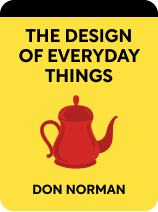

This article is an excerpt from the Shortform book guide to "The Design of Everyday Things" by Don Norman. Shortform has the world's best summaries and analyses of books you should be reading.
Like this article? Sign up for a free trial here .
What is reflective processing? Why is it important to understand reflective processing to make good designs?
Reflective processing is a type of processing that’s slow and deliberate. This type of processing helps you look back and learn about objects and products after you use them.
Read more about reflective processing and what it means for design.
Reflective Processing
The study of human cognition and emotion is an extremely complex area of neuroscience. A simplified model of this process is helpful for understanding the basic ideas and their implications for design. This model divides emotional and cognitive processing into three distinct levels: visceral, behavioral, and reflective. Each of these levels has important implications for design, so understanding them is crucial in order to design technology that is easy to use and to enjoy.
The Reflective Level
The reflective level is the level of conscious processing. Where visceral and behavioral processing happens instinctively and immediately, reflective processing is deliberate and therefore much slower. The reflective level allows us to brainstorm, consider alternatives, exercise logic and creativity, examine a new idea, and, as the name implies, reflect back on past experiences.
Emotion plays an important role at this level as well. Where the visceral and behavioral levels deal with subconscious, automatic emotional responses, the reflective level provokes emotional responses based on our own interpretation of an experience. For example, while fear is an automatic visceral response, anxiety about possible future events is a reflective response. Anxiety arises from our ability to predict possible futures based on current trends. But this is the same process that underlies feelings like excitement and anticipation. Our own interpretation of our predictions decides which of these emotions we experience.
Another example of this effect is the difference between guilt and pride. In order for us to feel either of these emotions, we have to believe we’re directly responsible for the outcome of a situation. If we judge the outcome of that situation positively, we’re more likely to feel pride. If we judge the outcome negatively, we’re more likely to feel guilt.
This kind of reflective processing has a strong impact on how we think about design. The act of reflecting involves synthesizing information from the other two levels into a cohesive memory of an experience. While visceral and behavioral processing is concerned only with the present, reflective processing looks back at the past and uses that information to make predictions about the future.
In a practical context, this means that memory is often the most important factor in determining how a user feels about the experience of interacting with a given object. If the object provoked pleasant visceral reactions and met our expectations, we’ll remember the experience positively. In cases where visceral and behavioral reactions conflict, reflective processing determines which of these factors we give more weight to and ultimately decides whether we remember the experience as positive or negative.
- For example, if an alarm clock keeps perfect time and is easy to use, but the alarm sound itself is so loud and jarring that you wake up each morning thinking the house is on fire, the memory of that visceral response might make you view the interaction negatively and avoid that specific clock (or brand) in the future.

———End of Preview———
Like what you just read? Read the rest of the world's best book summary and analysis of Don Norman's "The Design of Everyday Things" at Shortform .
Here's what you'll find in our full The Design of Everyday Things summary :
- How psychology plays a part in the design of objects you encounter daily
- Why pushing a door that was meant to be pulled isn't your fault
- How bad design leads to more human errors






